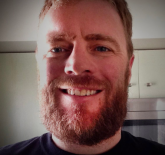Badminton Club Success Story

Previously published in Volume 81, Issue 2
Throughout the fall and winter of the 2014-15 school year, approximately 25 students between the ages 12 and 15 came to Charlottetown’s Birchwood Junior High School gymnasium every Wednesday evening. These students had little in common, other than an enjoyment of badminton.
Birchwood Badminton Club was established in October of 2014. The club’s goal is to provide an affordable and meaningful opportunity for students to participate in recreational badminton. The benefits of this program are as varied as the reasons for participating. Some players come for the exercise, some come for the competition, others join the club to socialize.
During the first 45 minutes of Badminton Club, participants warm up and practice a particular skill identified as the focus for that day (such as serves, drop shots and drive shots). Near the end of the first hour, we establish a list of players who want to participate in a ladder tournament. Sometimes we play a singles tournament and sometimes we play doubles. Regardless, only the players who want to be competitive join the ladder tournaments. Meanwhile, the other courts are used for practicing, rallying and drills.
Why badminton?
Birchwood Intermediate School is located in Charlottetown’s city center. Birchwood has a small student population of approximately 200 students. Many of the Birchwood students are new Canadians and/or from low income families. Most of our newcomer students come from Asian countries where badminton is quite popular.
Convenient
Since Birchwood Intermediate School is located in the city center, most students are able to walk to badminton club in the evenings. This is especially helpful for families who do not own a vehicle.
Affordable
The cost to join our club for the entire season is two dollars. This money is used to purchase shuttles. Other equipment (such as nets and racquets) is made available through the school.
Personal and social opportunities
On any given night we might have as many as ten different nationalities represented at our club. Despite cultural differences, our club supports identity building amongst this diverse and underprivileged group.
While some participants join to improve their badminton game so they can compete in school-sanctioned badminton tournaments, other students joined simply because their friends were going. Our club has become a vehicle for inclusivity and for the development of personal relationships.
Physical benefits
There are several benefits associated with badminton; Agility, power, accuracy, tactical awareness and endurance are all tested and applied when playing the sport.
Fair play
Self-regulation is one aspect of badminton that is quite unique to this sport. There are no officials! The onus is on the player to be honest and forthright. When playing badminton, players are expected to officiate themselves. Badminton allows the participants to engage in problem solving (by disputing a call, for example) and offers the opportunity to demonstrate and practice fair play.
What members have said
Suado, from Yemen
I attend badminton club because its fun and I get to meet new people. I get to learn it with my friends and you get to work as a team and I love competition. And I would like to get better at badminton.
Cecelia, from India
I attend Badminton Club, because I really enjoy the sport, and this club really helped me sharpen my skills. I feel proud that I am part of my school’s Badminton Club and look forward to participating in more competitions
Deepa, from Nepal
I play badminton for fun. It is my favourite sport and I like playing badminton with my friends.
Margaret, from Canada
I attend Birchwood Badminton Club because it’s fun and a great way to get active!
Deborah, from Nigeria
Because I want to be better at badminton and it’s very fun.
Urmila (Nepal)
I came to badminton club because I liked playing and I want to get better at it.
The inaugural season of Birchwood Badminton Club has been a success. Perhaps we will not produce any provincial champions (this year), but I believe we have encouraged some students to be more physically active than they were before. We have established a solid core group of students to promote and improve our club for next year. And we have provided a safe place for athletes of all levels to participate in recreational sport.








